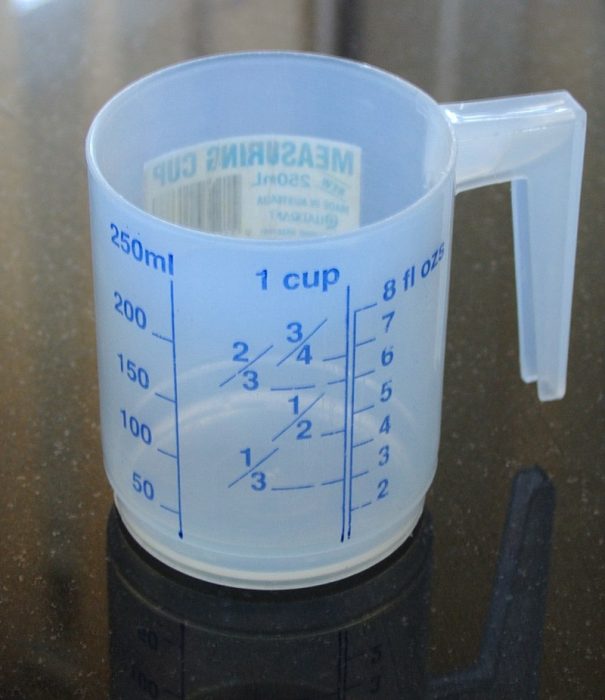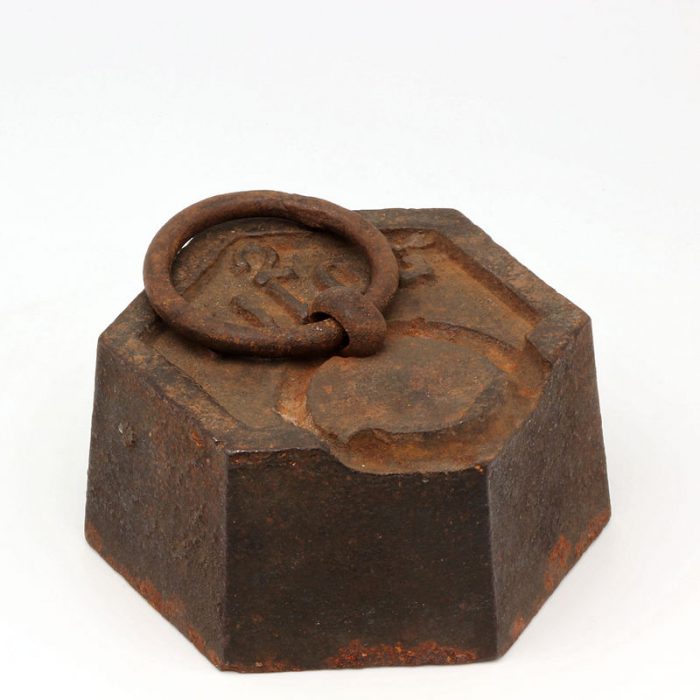
Density is a measurement of an object/material’s substance, with regards to its mass per unit of volume. The mathematical equation for density is the mass of the object divided by volume. There are different acceptable units for the measurement of density, including the international system of units/metric system and the US customary units system/Imperial system.
When given the density of an object using the metric system/SI units system the unit for density is kilogram per cubic meter. Meanwhile, the density of an object using US customary units is typically stated in pounds per cubic foot or pounds per cubic yard.
Metric System Versus Imperial system/International System of Units Versus United States Customary Units
The International System of Units, typically abbreviated as SI, is the most widely used system of measurement in the world. It is the modern form of the metric system, based on the metric system created during the late 1800s but with tweaks and standardizations that have happened throughout the years. The International System of Unit’s guidelines were formally published in 1960. The SRI/metric measurements are based around a system that uses base 10 measurements, with every 10 units increasing to the next level of measurement. There are seven base units, and these base units are the: the ampere, the second, the meter, the kilogram, the Candela, and the mole. There are also 20 different prefixes to be used along with these base units. For the calculation of density, two units of measurement are used: meter and kilogram. Meters are measurements of length while kilograms are measurements of mass.
The United States customary system, or USC, are derived from the Imperial system or English system. While many USC units are exactly the same as the Imperial units, there are a few differences. The most prominent differences between the Imperial system and the US customary system are between measurements of volume and measurements of length. For instance, the Imperial gallon is bigger than the American gallon. However, the American ounce is slightly bigger than the Imperial ounce. In terms of distance, the inch, foot, yard, and mile units are typically used to measure distance. Meanwhile, for weight ounces, pounds, and tons are the preferred units of measurement.
Volume And Mass

Measuring cup showing both milliliters and ounces. Photo: By No machine-readable author provided. Batty~commonswiki assumed (based on copyright claims). – No machine-readable source provided. Own work assumed (based on copyright claims)., Public Domain, https://commons.wikimedia.org/w/index.php?curid=459203
Because knowing the volume and mass of an object is a necessary prerequisite for determining the density of an object, it would be helpful to define the volume and mass. Volume is the way that the three-dimensional space an object/material occupies is quantified. Volume can be expressed with many different units, including cubic meters, milliliters, ounces, teaspoons, and gallons, to name a few. The circumstances that the volume is being measured in will dictate which units are used to express the volume. For instance, at the grocery store, you might buy a quart of milk. In contrast, when more exact measurements are needed, a chemist might use a graduated cylinder to determine the volume of a chemical solution, using milliliters as the unit of measurement.
When measuring the volume of a gas, the volume of the gas will be the same as the volume of the container, because gases expand to fill the containers they are in. Containers are also used to measure volumes of liquid, with a volume level frequently marked on the container. In terms of calculating the volume of regular solid objects, there are various formulas for calculating these volumes.

A weight used to help measure mass. Photo: By Coyau / Wikimedia Commons, CC BY-SA 3.0, https://commons.wikimedia.org/w/index.php?curid=22052718
While volume is a measurement of the amount of space a substance occupies, mass is a measurement of the amount of matter that the substance contains, or put another way mass is the quantity of matter that a material possesses. Mass is usually given in either grams or kilograms. One of the rules about mass is that the more mass of an object possesses, the slower that object will accelerate. While an object’s mass and its weight are related, the two terms are not equivalent. Weight is a function of the pull of a gravitational field on an object’s mass. To put that another way, weight is equal to mass times acceleration due to gravity. The gravity on earth is approximately 9.8 m/s2, and as a result, weight is technically reported with kilograms times newtons or kg·m/s2. However, since every object on the Earth is subject to approximately the same gravitational pull, weight is frequently reported in the same units as mass, as the distinction is only relevant when tracking the gravity of an object off the planet.
Calculating Density
The formula for the calculation of density is: density = mass/volume. Or, density is equal to mass divided by volume.
When calculating a density, density is frequently given in grams per cubic centimeter, or G/centimeters cubed. It’s important to remember that cubic centimeters are a volume while grams is a mass. While density can be given in either United States customary units or Imperial units, in reality when density is dealt with the metric system is usually used. While Americans may use customary units in their commercial activities or for personal use, most sectors of industry, as well as medicine, and science will use metric units for these calculations.
Density is one of the fundamental concepts in the physical sciences, and it is used in the calculation of things like the distribution of liquids in a solution or the substance density of a mineral. Minerals and elements have set densities, gold always has a density of approximately 19.3 g/m³.
While one probably has an intuitive feeling before density, for example, most people intuitively grasp that sponges have a low-density while an iron skillet has high density, the concept of mass and density can be confusing. For instance, the terms light and heavy refer to mass, not density. It is possible for an object to have high mass but low-density. One can envision an incredibly large sponge with a lot of mass but relatively little density because per unit of volume it still has very little weight. This is why when calculating density, the volume of the object must be taken into consideration as well as the weight.
To determine the density of an object, the object should be weighed and then the volume of the object measured. For instance, if a boulder is weighed in at 100 g, and the volume of the boulder is determined to be 400 cm³, you simply divide the mass by the volume to get density. 1000 g divided by 400 cm³ is 2.5 g/cm³.
One should remember that the density of two objects can’t simply be added together. As an example, if a sample of Earth is made out of two different minerals, one which possesses a density of 3.5 g/m³ and the other which has a density of 2.8 g/m³ the Earth sample’s density will be between the 2.8 g/m³ and 3.5 g/m³. The density of the sample won’t be 6.3 g/m³. Why is this the case? This results from the fact that the mass and volume of the two minerals are averaged together, not simply the mass or the volume on their own. As a result, when the mass and volume are divided the density is between those two individual calculations.
Gases have very little density. In fact, the density for gas will be somewhere in the thousandths of grams per cubic centimeter. In contrast, the density of a liquid is usually around 1 g/cm³, with freshwater being a perfect example of this density level, having a density of exactly 1.0 g per centimeter. In terms of solids, metal substances have densities around 6 to 7 g/cm while rocks typically have a density of approximately 3 g/cm³.
A concept related to the concept of density is specific gravity. You can find the specific gravity of an object by comparing the density of water to the density of that object. In other words, specific gravity is just the density of the material/object divided by the density of water. The density of water is 1 g/cm³, as mentioned above. For this reason, the specific gravity of an object is usually around the same as the density for an object in grams per cubic centimeter. However, since a specific gravity does not have units tied to it, and is represented the same in either the Imperial system or the metric system, or any other system of measurement, specific gravity is useful when trying to compare the density of two objects with one.
Calculating Density – Example

Photo: congerdesign via Pixabay, CC0
Let’s say you have a brick of salt which weighs 433 g and has the following measurements: 10.0 cm x 10.0 cm x 2.0 cm. If you were asked to find the density of this salt brick, how would you do it? Just remember that density is simply mass divided by volume, so you need to determine the volume in order to calculate the density. Volume is just width times length times thickness if the object is in the shape of the box.
This means that you just multiply together 10 cm x 10 cm x 2 cm and get 200 cm cubed. To find the density of the salt brick, all you have to do is divide the mass by the volume. 433 g divided by 200 cm³ gives 2.165 g/cm³ so the density of the brick is 2.165 g/cm³.








